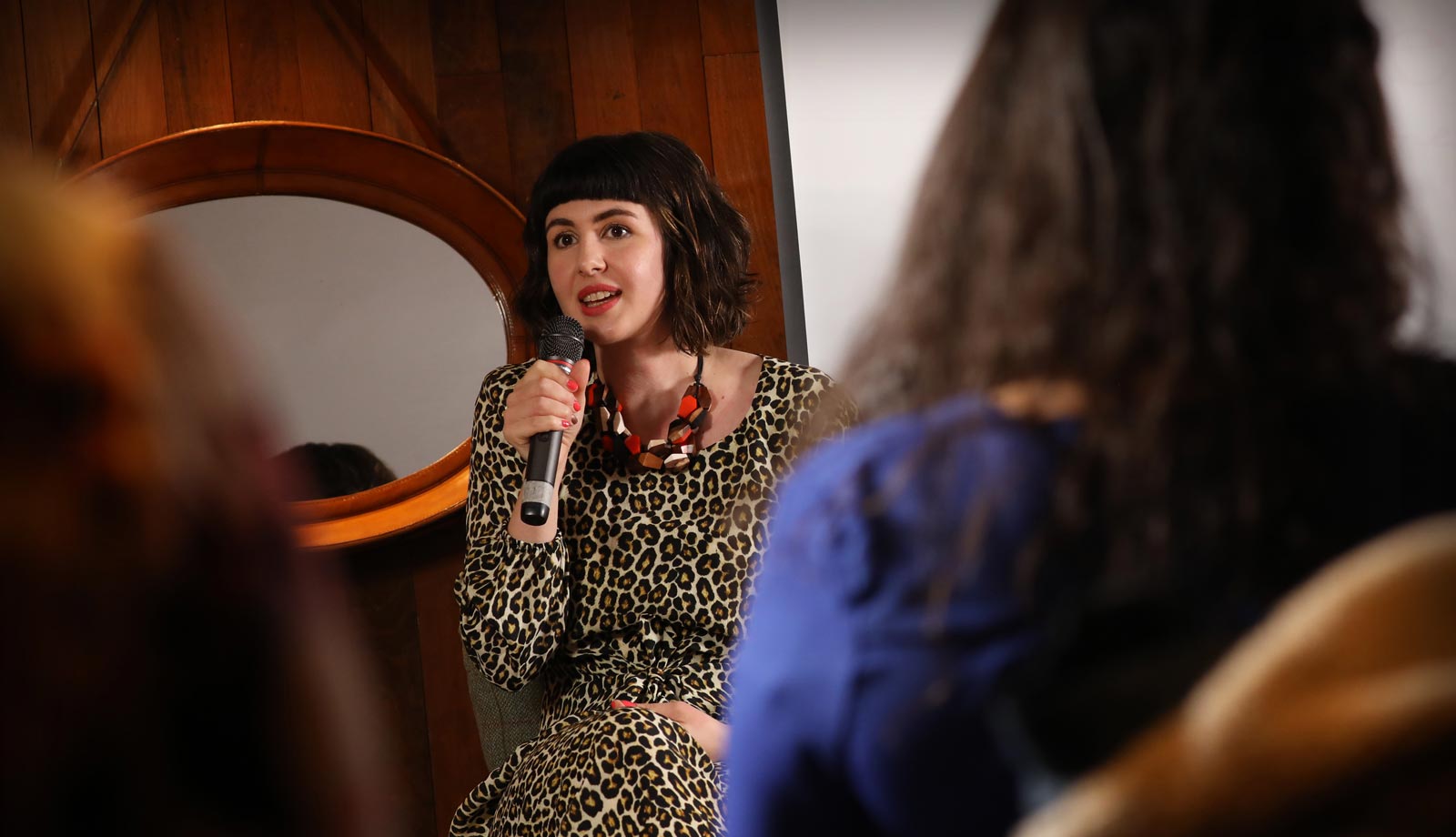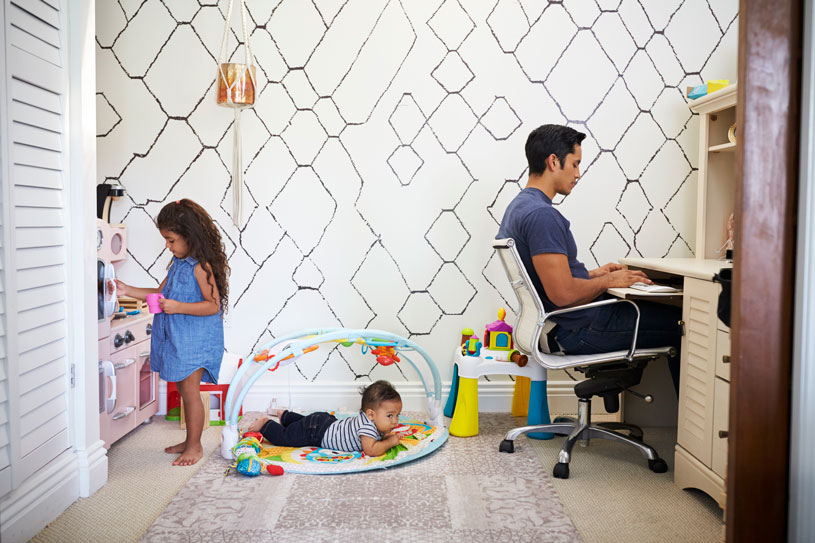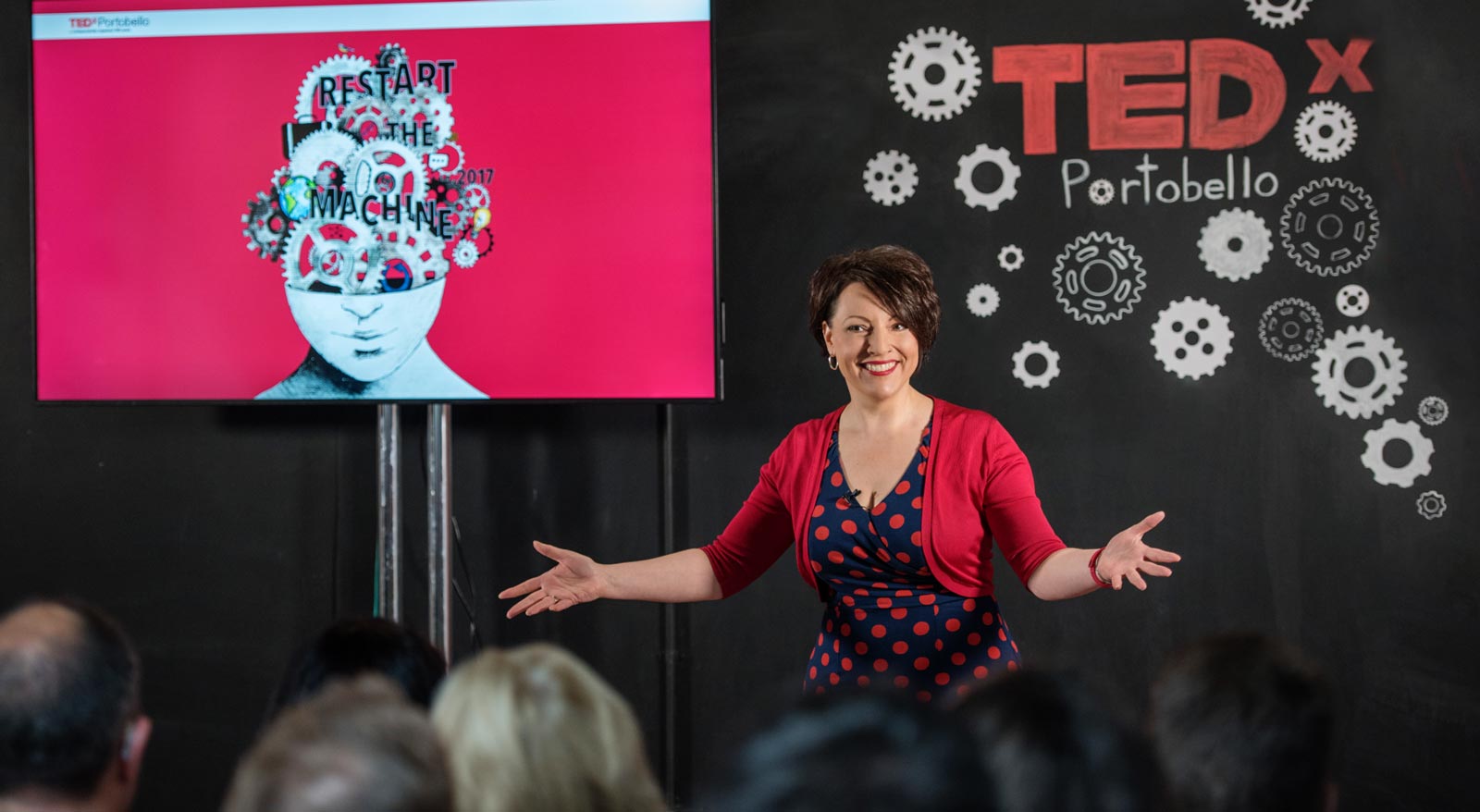
Now that online events have become a fact of life, it’s crucial that we get smart about how we’re interacting with our audiences as speakers – and how we’re making the most of these experiences as audience members. Laura Westring and Mel Sherwood, both experts in presenting and public speaking, offer their tips and tricks for engaging audiences, and how to stay switched on as an attendee of an online event.
We all know the drill by now: sit down, plug in, log on. Online events have been part of our everyday lives for almost a year now, but when it comes to their execution and making the most of the experience, there’s still a lot to be learned.
Attending an online event is a very different experience to an in-person one; not only physically but emotionally, too. Distractions are all around; it can be more difficult to make connections and to stay present; it’s all too easy to give up and log off if your attention isn’t being held.
How we can help
At the EICC, we understand the barriers that the pandemic has put up to our experience of events. As long as fully in-person events are off the table, we’ve made it our mission to provide hybrid and online events that are productive, authentic and immersive.
Our Make It Edinburgh Live solution offers more than simply a live-streamed event – it is designed to foster the same meaningful interactions and connections that are made in-person. As well as presentations and plenary sessions, there are ample opportunities for audience participation, and for delegates to break into smaller groups for meetings, discussion and networking sessions. For speakers, there is a virtual green room in which to prepare and liaise with stage managers. Sponsors and exhibitors can be integrated within the event too.
Whether you’re attending as a speaker or a participant, there are things you can do to get the most possible value from an online event. Reflecting on their experiences over this period, two experts share their perspectives...

Laura Westring
westringwrites.com | speechwritingschool.com | twitter | linkedin
“Too often people start with the message about a product or achievement they want to push out, but you should always start instead by asking: who is my audience? It’s not about you, it’s about them.”
Laura Westring is a ghostwriter, speechwriter and leadership communications consultant. Her comprehensive training courses in speech writing for powerful public speaking help presenters craft meaningful and uplifting speeches and forge a connection with their audiences. Laura has also appeared on BBC Scotland's Politics Scotland and contributed to The Scotsman on the subjects of leadership, communication and politics.
Naturally, the pandemic has forced Laura to embrace online events, but she says the experience has taught her to hold events to an even higher standard. “I think the pandemic has put a huge strain on us all, but especially on families,” she explains. “You’re all in the same space, but you’re not present. If I’m going to be on my laptop, I have to have a really good reason! I tend to only take part in something if it's exactly the thing I want to learn about or experience.”
Poorly organised events are a bugbear for Laura; she believes that the worst mistakes made with in-person events are too often carried over into the virtual setting. Unnecessarily long preambles; repeating information from the event landing page or handbook; limited audience participation during the event – these are the aspects that are crucial to avoid if you’re going to keep your audience engaged, says Laura. “Get to the part that is going to be useful to the audience quickly. One of the questions I often ask myself when I'm writing for a client or the paper is: is this information genuinely new to the audience? Too often people start with the message about a product or achievement they want to push out, but you should always start instead by asking: who is my audience? What’s important to them? What are they most interested in? It’s not about you, it’s about them.”
Keep it concise
In fact, Laura advises against taking up too much time altogether. “What you're saying shouldn’t last more than 18 minutes. You should know your key points and be able to say in a few sentences what the point of your presentation is. If you’re going to read off a PowerPoint, you’d be better sending that round in an email. Instead create space for audience participation and answer questions in rapid fire. Don’t give just one person you already know the chance to take part.
“Preambles in virtual events really get in the way. We tend to put all our thoughts down on paper and overestimate how much context is actually needed. We’ve all read your bio and we all know the theme of the event we’ve signed up to. What people really want to hear is stories, examples, numbers, methods – things that they can take away immediately and implement in their lives and their work.”
“The best way to run a successful event is to create an emotional connection with your audience. That’s much more difficult in an online setting – but it’s not impossible!”
Use whatever tools you have at your disposal, Laura advises. If there’s a chat function, ask participants to type things in, to let you know they’re still with you. “Often as an online speaker, you can't see the audience. Whatever you can do to engage with that audience and get real-time feedback is helpful.”
“It's important to know who your audience is and to understand their needs,” Laura continues. “People are really pushed for time; they might be in different time zones; or attending the event on top of their own work. The way you engage them is by answering the questions that they want answers to, or by building in space for them to do things they wouldn’t otherwise have the opportunity to do – like connecting with someone new in a breakout room setting engaging in mental or physical exercises together; listening to a live performance or being invited to share their own thoughts and experiences.”
Finding space for online events

The distractions of home can also mean participants may not be in the right headspace to be engaged in an event, which is why Laura believes it is important for organisers to create immersive experiences. “By the time I’ve put my son to bed, got my laptop set up and entered the event, I often feel quite stressed. You don’t know what else is going on in people’s day – that’s why it’s so important to set a good tone. Organisers can achieve this by beginning with a shared experience – whether that’s drawing, origami, mindfulness, yoga, a pop quiz, or just asking participants to reflect on some initial questions.”
“In my opinion, the best way to run a successful event is to create an emotional connection with your audience. That’s much more difficult in an online setting – but it’s not impossible! All your audience has to go on is their screens, but talk to them openly about a turning point in your life and watch their barriers and assumptions about the event fall away.
“It's amazing how emotionally invested you can become in a well-planned online event. It doesn't matter what event it is: people won't remember most of what was said the next day – but they will remember how you made them feel.”
Laura’s top tips:
For speakers
- Conduct an audience analysis and know who you’re speaking to
- Make sure your lighting is on point
- Keep it concise, keep it real and know your point
For attendees
- Prioritise events that are going to be worth your time
- Join in shared experiences wholeheartedly
- Provide constructive feedback to the organisers

Mel Sherwood
melsherwood.com | twitter | LinkedIn
“Some speakers go old school and deliver their talk exactly as they would in person. Others use different software to share information and interact with the audience. That can be great – but I don't think fancy tech matters if the speaker is truly engaging.”
Mel Sherwood is a pitch and presentation specialist who prepares ambitious entrepreneurs and business professionals to present their material clearly, confidently and credibly. She has developed a unique set of programmes delivered as interactive keynotes, masterclasses and one-to-one sessions, in which she shares the communication and confidence tips she has learned during her 25 years in business – and a lifetime of being on stage.
Throughout the pandemic, Mel has been delivering training, talks and events in an online setting. As a regular participant, she is always conscious of learning from other people, how they're using the virtual environment, and sharing best practice.
In Mel’s experience, online events have their benefits, as long as they are handled well. “When you're in a room of people, there is energy around that, and that can be good or bad! It's a different experience online – but possibly a more intimate one. You’re much closer to the event; you've literally got a front row seat. It can make events more accessible for people who are less comfortable in a large group of people – ideal for introverts!”
As Mel explains, there’s no one way to go about presenting at an online event, and the variety in styles can itself provide an engaging experience. “Some speakers go old school, standing up and delivering their talk exactly as they would in person. Others get really into the tech and use different software to share information and interact with the audience. That can be great – but I don't think fancy tech matters necessarily if the speaker is truly engaging.”
Manage your expectations
“As a speaker at an online event, it’s really important to not expect it to feel the same as it does in a live setting,” explains Mel. “If you're someone who gets a buzz from a live audience and you're expecting that online, it's just not going to happen! But you can still make the most of it, and use the tools you have at your disposal.
“You have to be authentic in the way that you communicate”
“Where possible, ask attendees to turn their cameras on, and utilise tools that will keep them engaged, such as live chats and polling. That can help you to know how your material is landing, and ensure you feel connected to your audience.”
It’s key to find your own style and not get bogged down in what you think you should be doing. “You have to be authentic in the way that you communicate,” says Mel. “Some people are quite comfortable to sit at a desk like a news presenter when they are delivering material, but there’s nothing wrong with being on your feet and moving about.”
The power of physicality

Attending online events eliminates the physical element of events – travelling to the venue; moving between spaces; milling about in networking sessions. This is why it’s so important for both speakers and participants in online events to ensure they are staying active in order to maximise their engagement and energy levels.
“We all have to take responsibility for ourselves as audience members as to how we feel,” says Mel. “But these things can be encouraged by speakers too. If the cameras are on, ask people to put their hand up if they've had an experience. Ask them to find a particular object or write something down on a piece of paper and hold it up to the screen.
“Even something as simple as finishing an event by taking three deep breaths together – that can tune everyone in to one another. Even though we’re physically apart, we’re all experiencing something together.”
“I've been at events where the speaker has encouraged people to hold their hands up to the side of the screen so that in gallery view everybody looks like they're holding hands, which creates a powerful sense of unity. Helping people to connect emotionally, getting them moving rather than just passively listening – it’s amazing how these things can keep the energy up.”
Mel also recommends initiating shared experiences as a way to connect speakers and audiences. “I love using music to welcome people in,” she says, “but be sure to check copyright if you’re going down that route! Exercises like mindfulness and meditation can be useful too, when appropriate. Even something as simple as finishing an event by taking three deep breaths together – that can tune everyone in to one another. Even though we’re physically apart, we’re all experiencing something together.”
Mel’s top tips:
For speakers
- Practise with the tech – every platform is different
- When appropriate, encourage attendees to switch their cameras on to feel more connected
- Don’t just look at your camera, look through it – there’s a difference!
For attendees
- Keep active – stretch, move about, or watch standing up
- Contribute to chat function to stay engaged
- Eliminate or minimise any distractions around you

